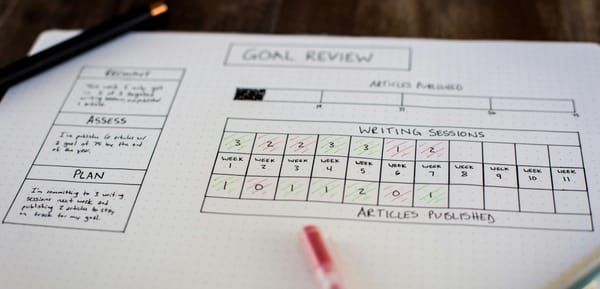Mobbing

Why Does Understanding Workplace Mobbing Matter?
Ideally, work should be a place of safety, respect, and productivity. However, many people in the United States do not experience this because of workplace mobbing. Mobbing is a form of psychological harassment or bullying that quietly damages careers, mental health, and organizational culture, affecting millions each year.
The Workplace Bullying Institute (WBI, 2021) reports that over 30% of American workers have experienced bullying or mobbing, and almost half have witnessed it. These behaviors create toxic cultures, increase absenteeism, reduce productivity, and cost businesses billions of dollars each year.
This article defines mobbing, explains how to identify it, outlines its effects, and discusses the U.S. legal context, as well as provides practical steps for both employees and employers. The aim is to equip readers with clear solutions to address and prevent mobbing.
What Is Workplace Mobbing?
Workplace mobbing occurs when an employee is singled out, mistreated, or excluded by coworkers or supervisors. It's not a one-time incident, but a repeated effort to make someone feel unwelcome or unworthy. The aim is often to force resignation or harm reputation. Examples include:
- Leaving someone out of meetings or important emails
- Unfairly criticizing or nitpicking their work
- Spreading rumors or gossip
- Giving impossible, meaningless, or excessive tasks
- Publicly embarrassing, mocking, or shaming someone
Effects of Workplace Mobbing
On Employees
Mobbing is not just something to accept at work; it can have lasting effects on individuals. It seriously threatens both mental and physical health. People who are targeted often report:
- Anxiety and depression
- Insomnia and sleep disorders
- Chronic stress and burnout
- Panic attacks or physical illness
- Erosion of self-esteem and professional identity
The American Psychological Association (APA) found that long-term mobbing can have effects as severe as post-traumatic stress disorder (PTSD). Victims may need months or years to recover after leaving the toxic environment.
Struggling with confidence after workplace mobbing? Read our guide on What Is Self-Esteem? The Power of Believing in Yourself to start rebuilding your inner strength.
The impact extends beyond the targeted employee. Companies feel it too.
- High turnover: Valuable employees resign to escape toxic environments.
- Lower productivity: Teams under stress underperform.
- Legal risks: Harassment and hostile environment claims cost millions.
- Damaged reputation: Toxic workplaces deter talent. A 2019 Harvard Business Review report found that toxic behavior, including mobbing, is a leading cause of employee disengagement in the U.S.
The legal landscape around mobbing in the U.S. is complex. There is no federal law that directly prohibits mobbing or bullying in the workplace. However, some cases of mobbing may be covered by other laws if there is also discrimination or harassment based on protected characteristics, or if unsafe working conditions are created.

Relevant Federal Protections:
- Title VII of the Civil Rights Act (1964): Protects employees from harassment and discrimination based on race, gender, religion, or national origin.
- Age Discrimination in Employment Act (ADEA): Protects employees over 40 from age-based mobbing or harassment.
- Americans with Disabilities Act (ADA): Covers mobbing related to disability.
- Occupational Safety and Health Act (OSHA): Requires employers to provide safe working conditions.
State-Level Efforts
Some states have proposed or passed anti-bullying bills, such as the Healthy Workplace Bill. States like California, New York, and Tennessee have led efforts, but laws vary and often lack full protection.
Currently, most claims involving workplace mobbing are brought under existing laws as 'hostile work environment' cases. Employees must show that the behavior meets the legal definitions outlined in those laws.
What To Do If You’re Experiencing Workplace Mobbing
1. Document Everything
Keep detailed records: dates, times, emails, messages, and notes from incidents. Documentation is critical if legal action becomes necessary.
2. Identify Witnesses
If coworkers witnessed the behavior, ask for their support. Witness testimony adds credibility.
3. Report Internally
Use official channels, such as HR or compliance hotlines, or report to your manager. If your manager is involved, go to HR or higher leadership.
4. Seek Legal Advice
Consult an employment attorney, especially if discrimination, harassment, or retaliation is involved. Many offer free consultations.
5. Protect Your Mental Health
Even if pursuing legal action, prioritize your health. Therapy, counseling, and Employee Assistance Programs can help manage stress and prevent burnout.
Tip: If your company offers an Employee Assistance Program (EAP), it’s confidential and available at no cost. Don’t hesitate to use it.
Not sure how to speak up about mobbing? Explore our blog on How to Have Hard Conversations for practical tips to approach these discussions with clarity and confidence.
Employer Responsibility: How Companies Can Prevent Mobbing
Forward-thinking U.S. companies know that preventing mobbing is both the right and smart financial choice.
Best Practices for Employers
- Zero-tolerance policies: Clear, written policies that prohibit bullying and mobbing.
- Anonymous Reporting: Hotlines or Digital Platforms for Safe Reporting
- Training programs: Managers trained in conflict resolution, emotional intelligence, and respectful communication.
- Regular surveys: Anonymous surveys to measure workplace culture and detect early warning signs.
- Swift action: Taking every report seriously, no matter how small it may seem.
The Society for Human Resource Management (SHRM) states that companies that address harassment experience 40% higher retention rates and stronger reputations.

Case Study: Mobbing in a U.S. Tech Company
In 2020, a mid-sized California tech firm experienced a high turnover rate after a senior manager consistently excluded staff from meetings, unfairly criticized work, and spread rumors. Within 18 months, 25% of the team left.
Following external investigations, the company implemented strict anti-bullying policies, established anonymous feedback channels, and provided leadership training. Within a year, retention rates improved, and engagement rose by 35%.
This case shows that mobbing is not just an individual concern; it is a significant business risk. More than a behavioral issue, workplace mobbing is a persistent form of psychological violence that harms people and organizations. Solutions begin with awareness, documentation, and prevention, as U.S. laws continue to evolve.
Employees should be aware of their rights, speak up when necessary, and prioritize their health. Employers must create a safe, respectful workplace.
Aitherapy: Support When You Need It Most
If you are facing workplace mobbing, you may feel isolated, anxious, or uncertain about what to do next. You do not have to navigate this experience alone.
Aitherapy provides on-demand, AI-powered mental health support to help you manage stress, regain confidence, and feel supported at any time.Whether you’re struggling with anxiety, burnout, or the emotional weight of workplace harassment, Aitherapy provides:
- Instant access to supportive conversations
- Evidence-based coping tools
- A safe space to process your feelings anytime, anywhere
If mobbing is impacting your life, consider seeking support, such as Aitherapy. Workplace mobbing is a severe issue that warrants attention. As mental health and workplace safety gain importance in the U.S., employees and employers must work together to create safer and healthier environments.
For individuals, the first step is to recognize mobbing, protect yourself, and seek support. For organizations, prevention and accountability are key. By working together, we can create workplaces that are more productive, safe, and inclusive for everyone.





